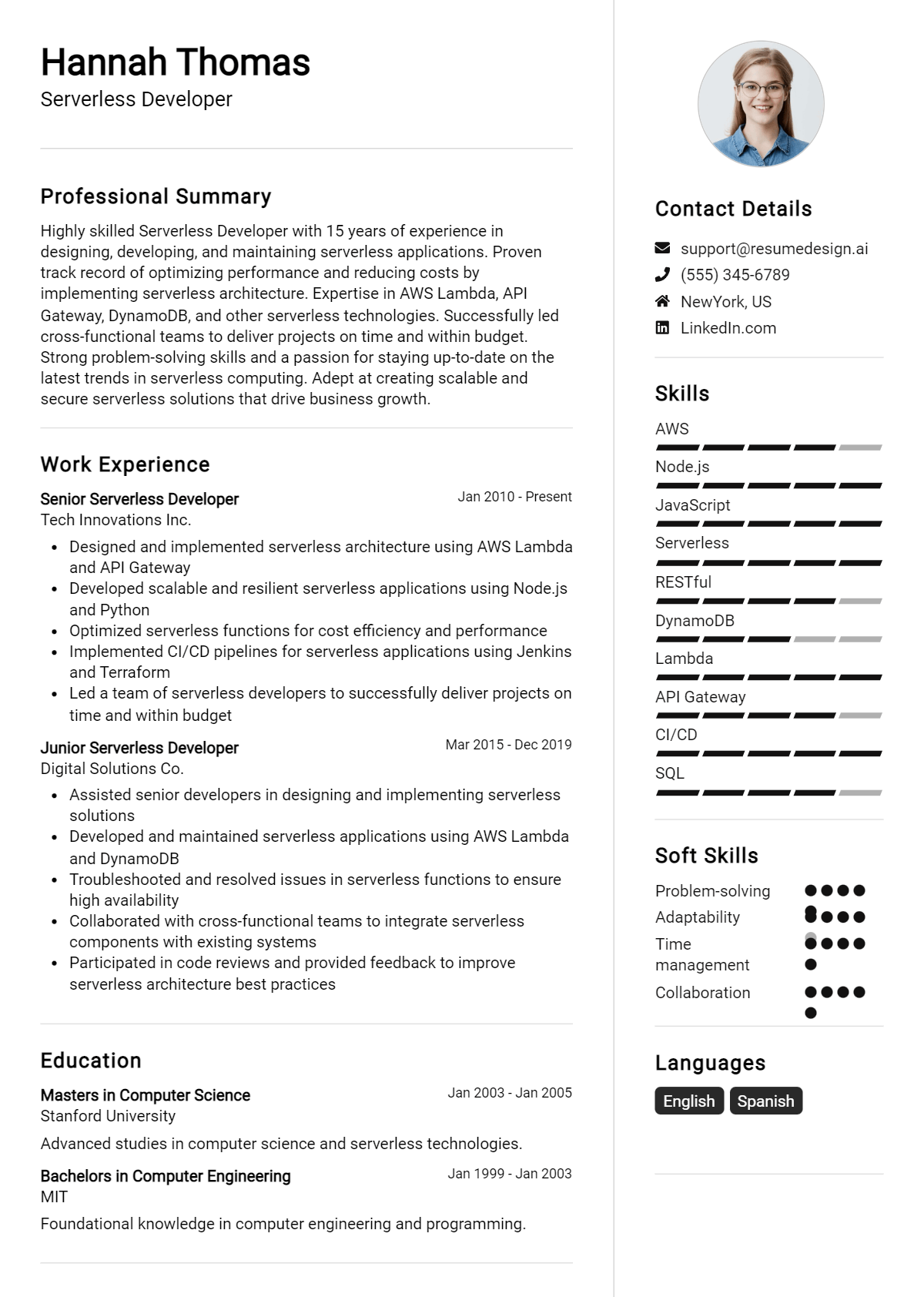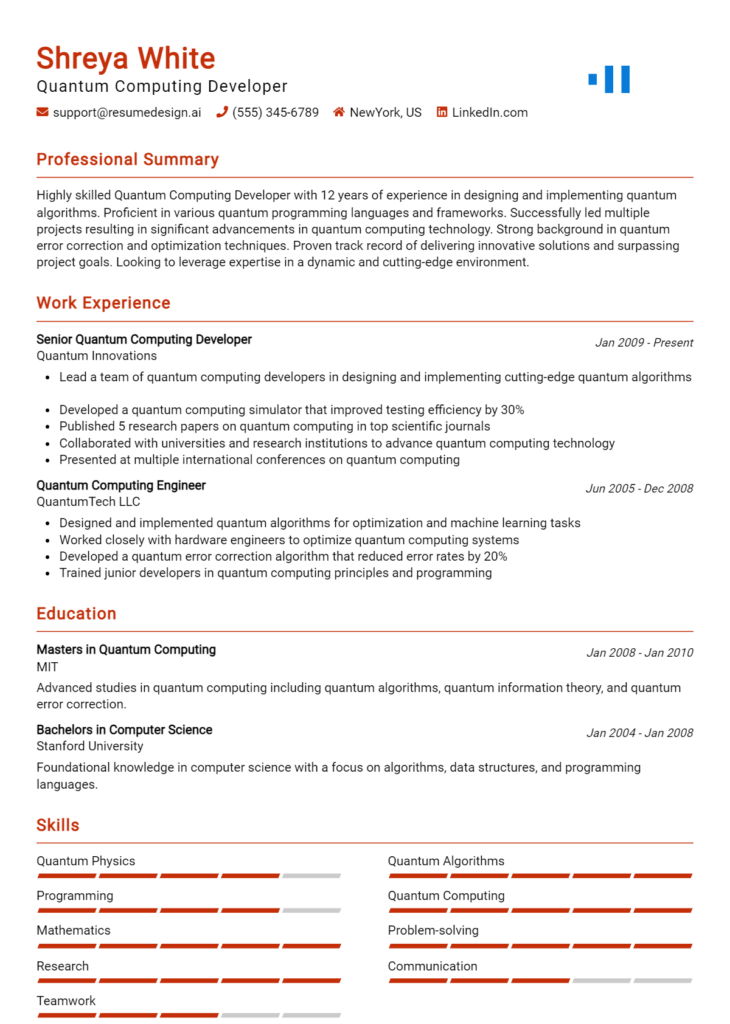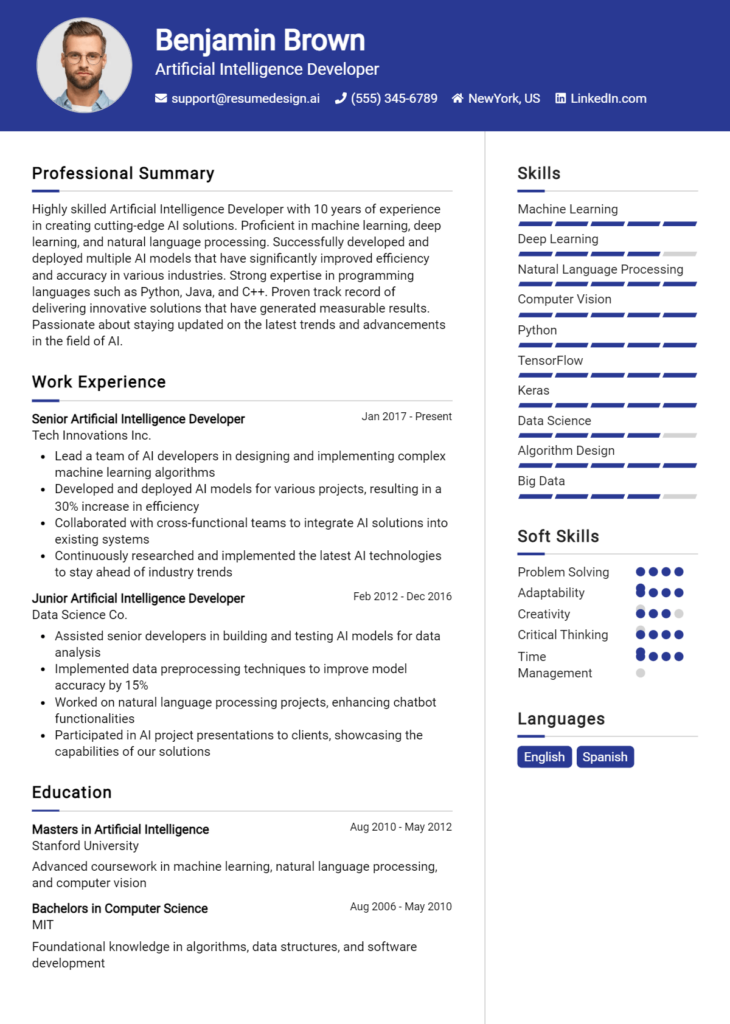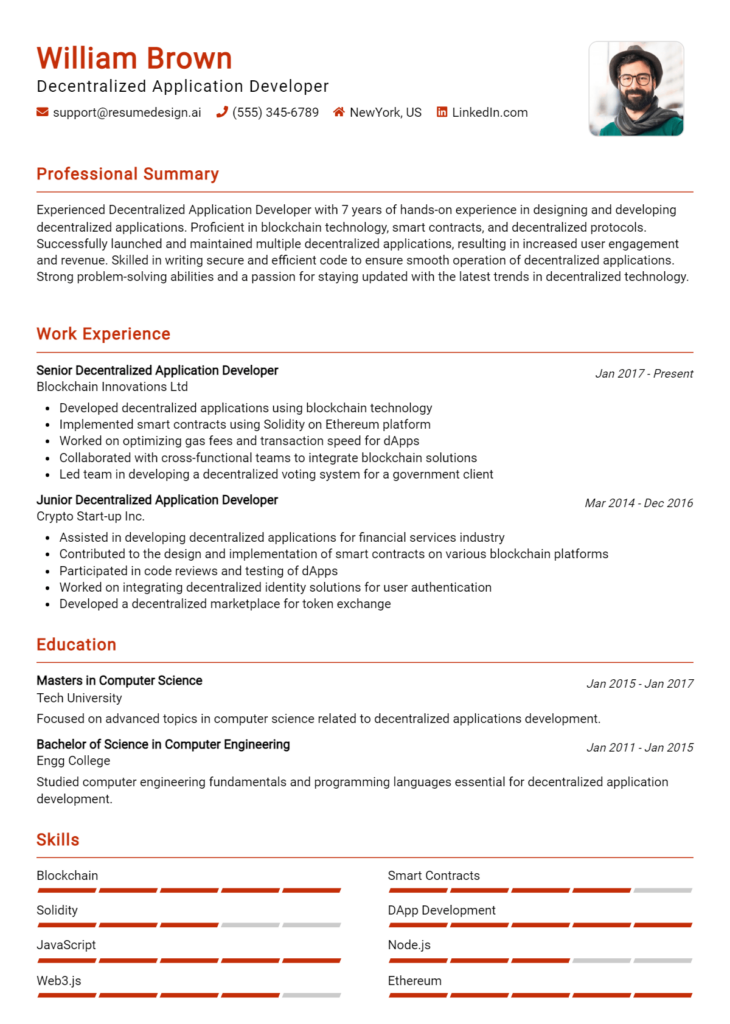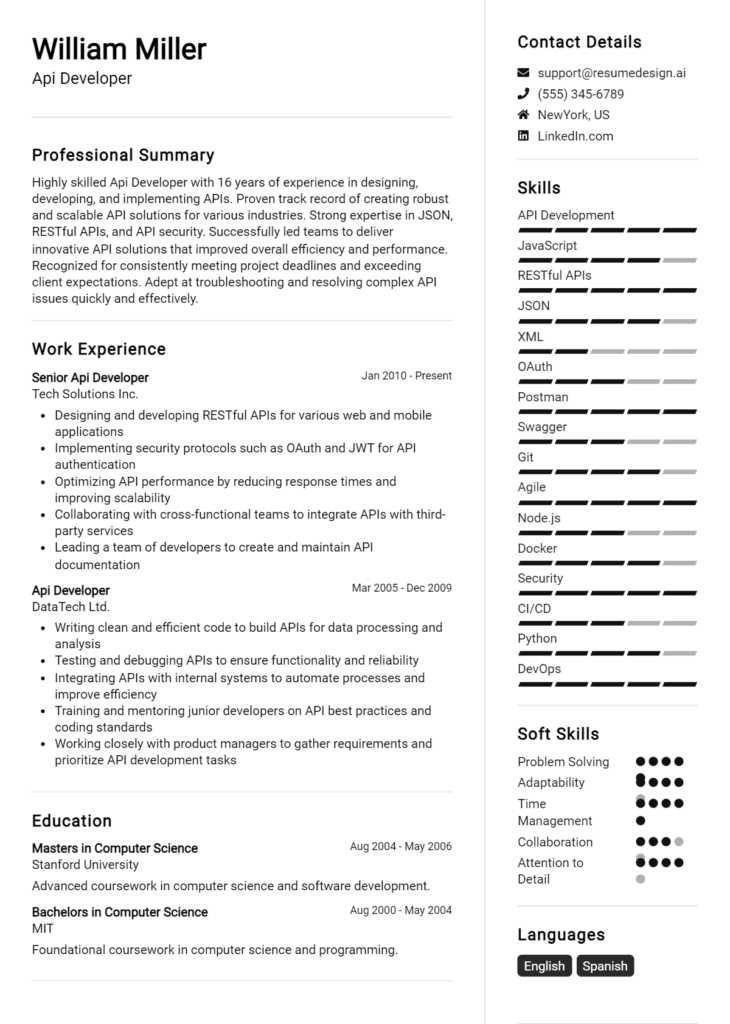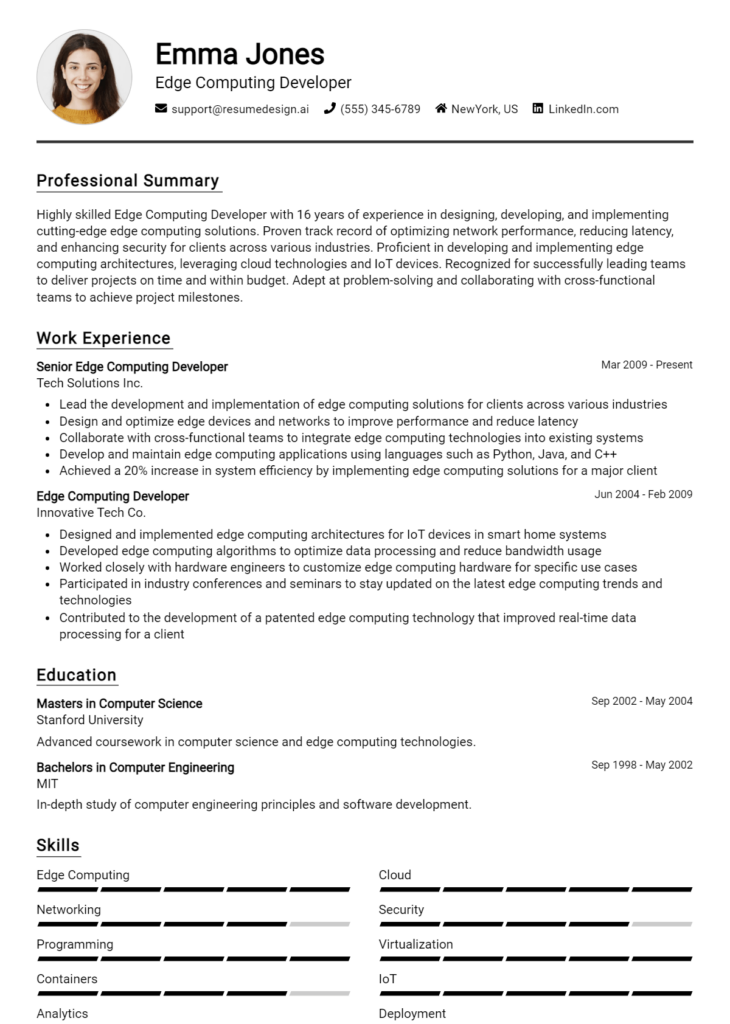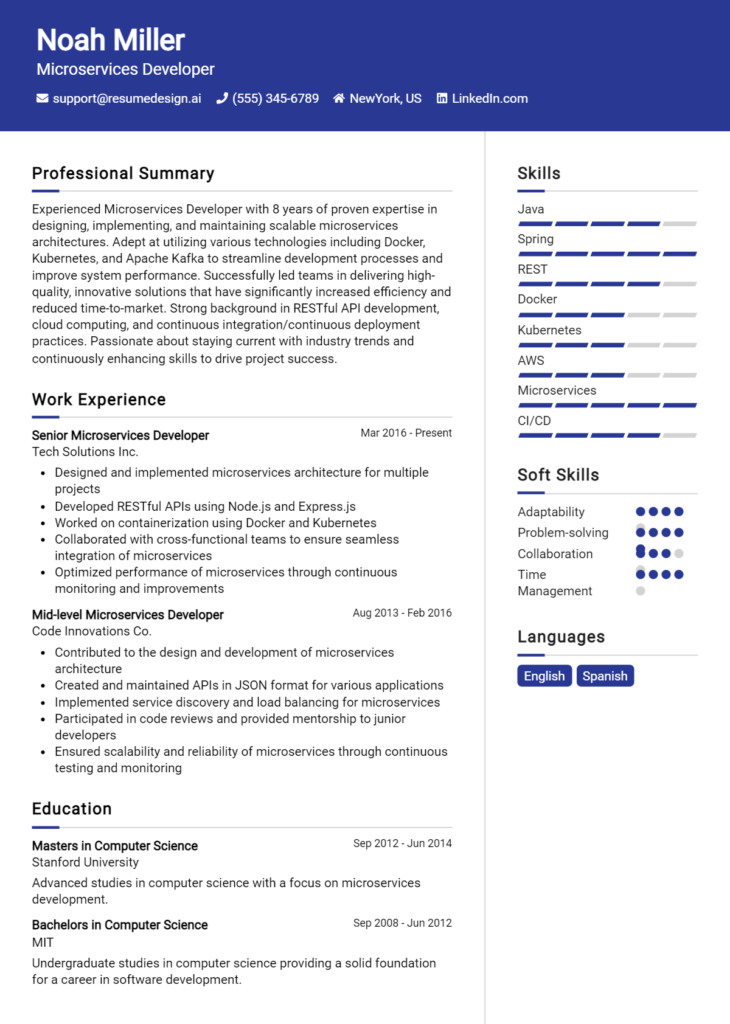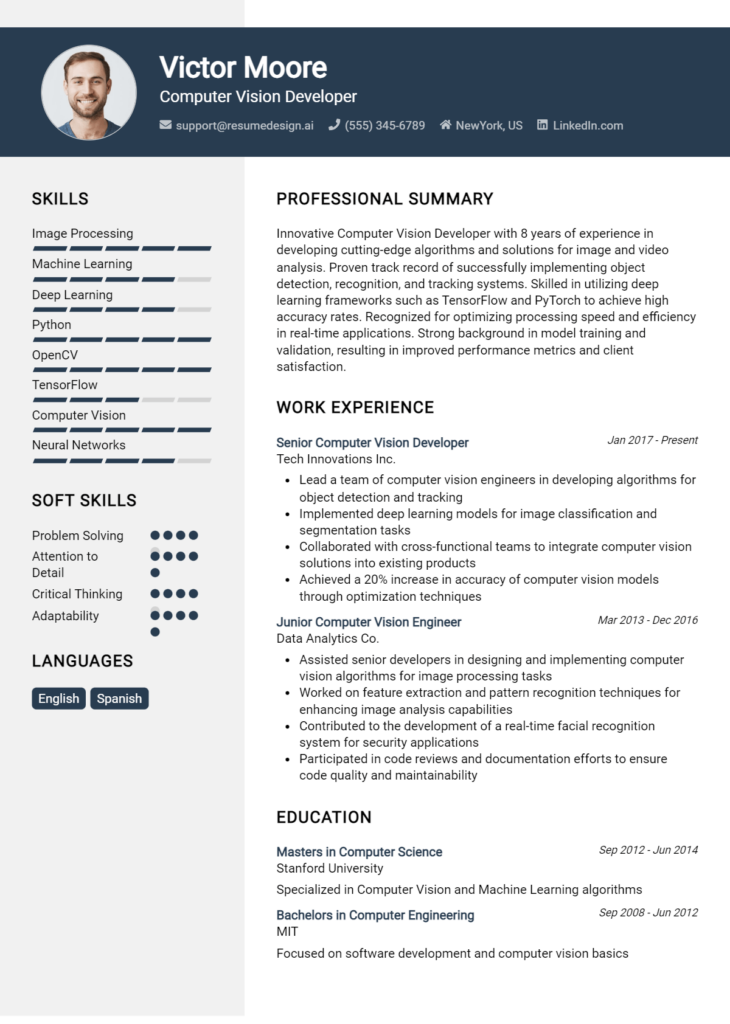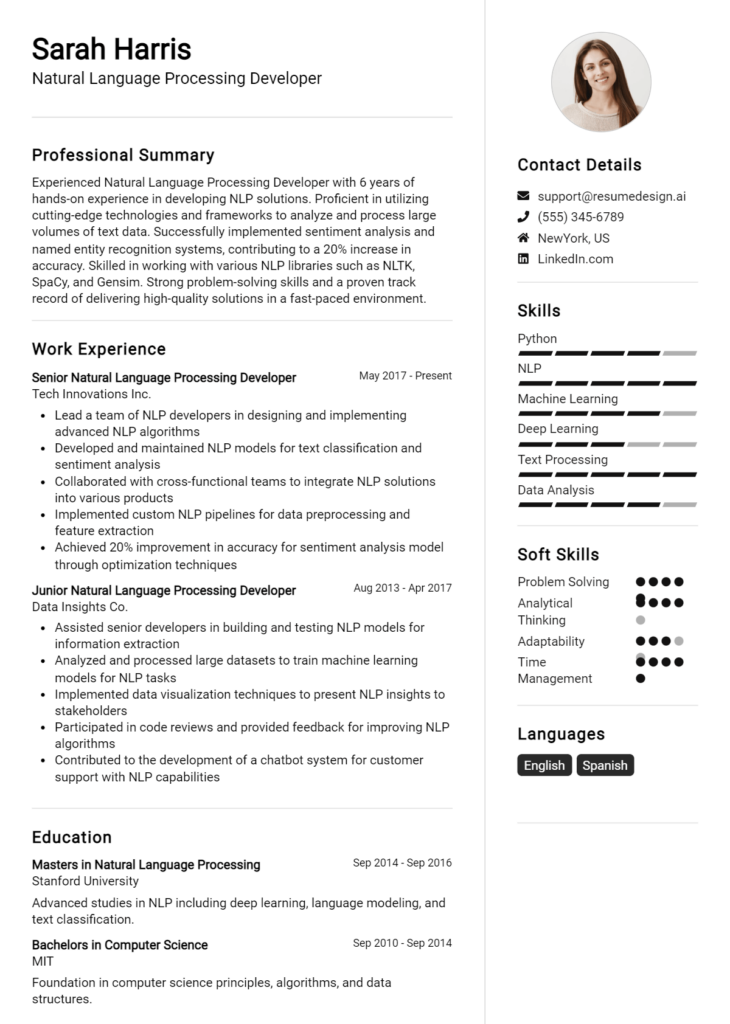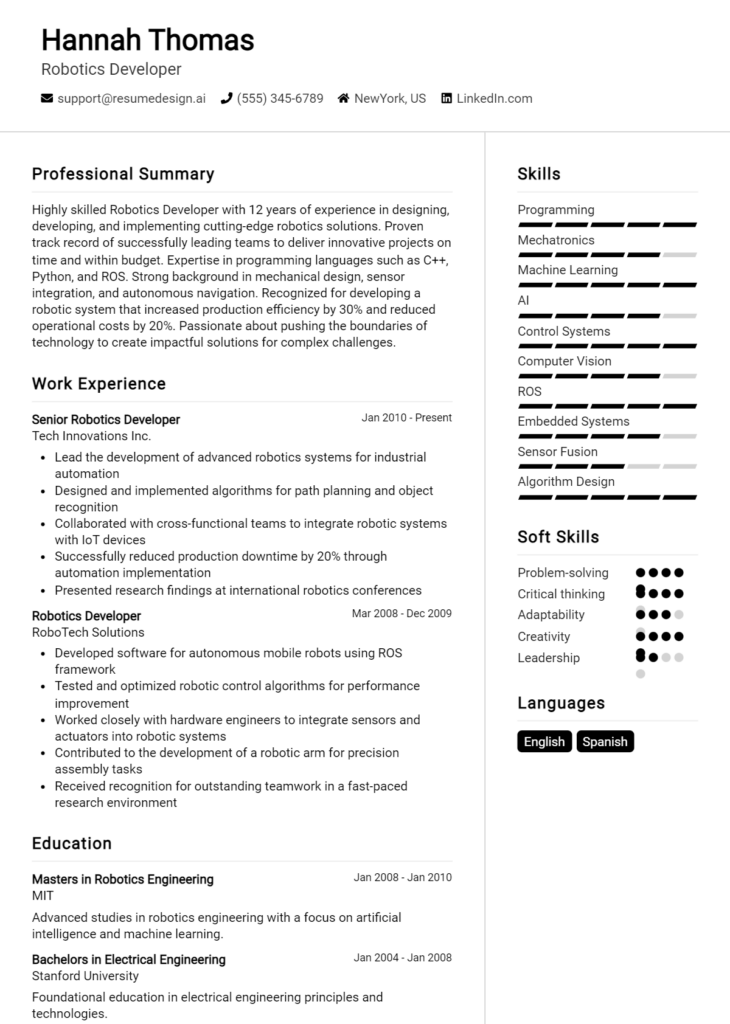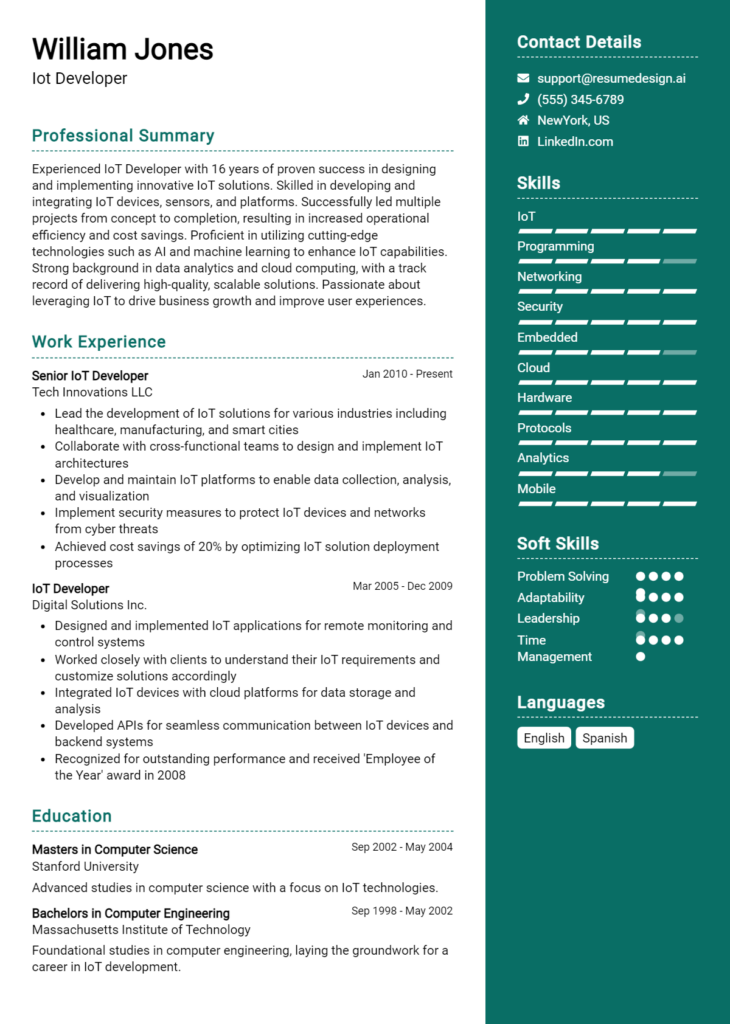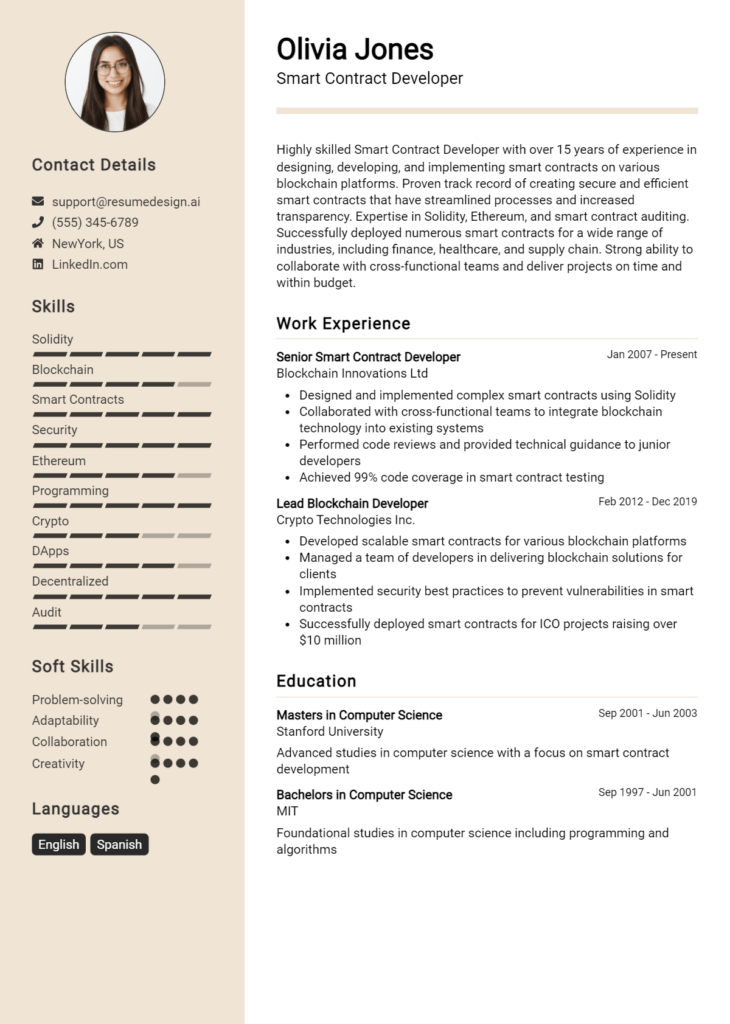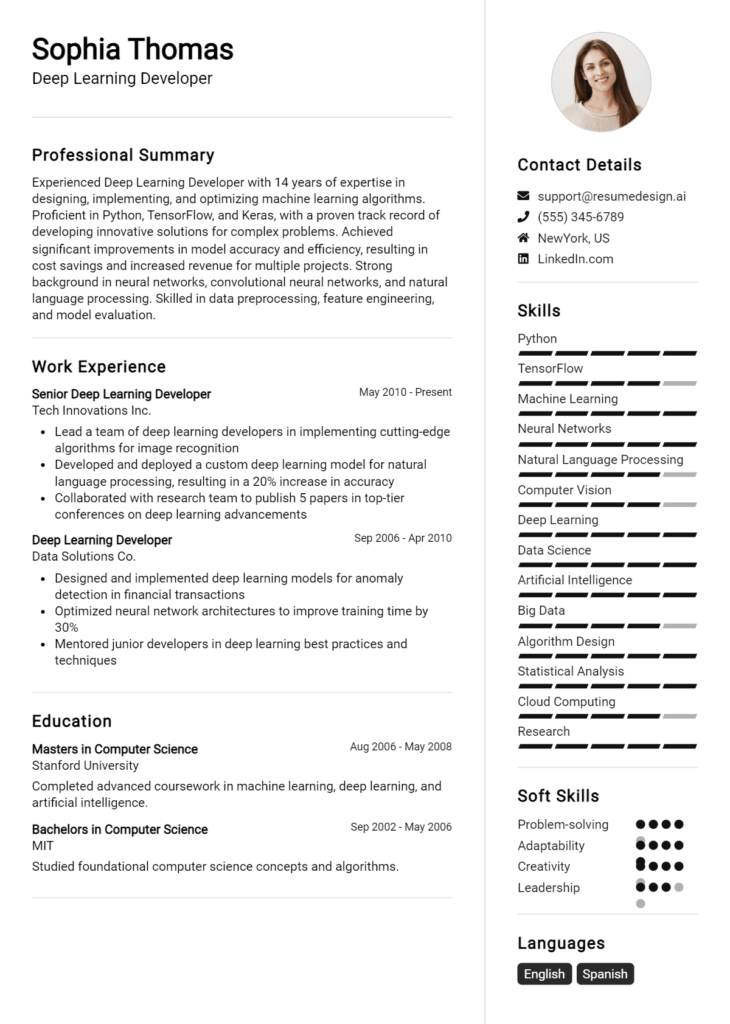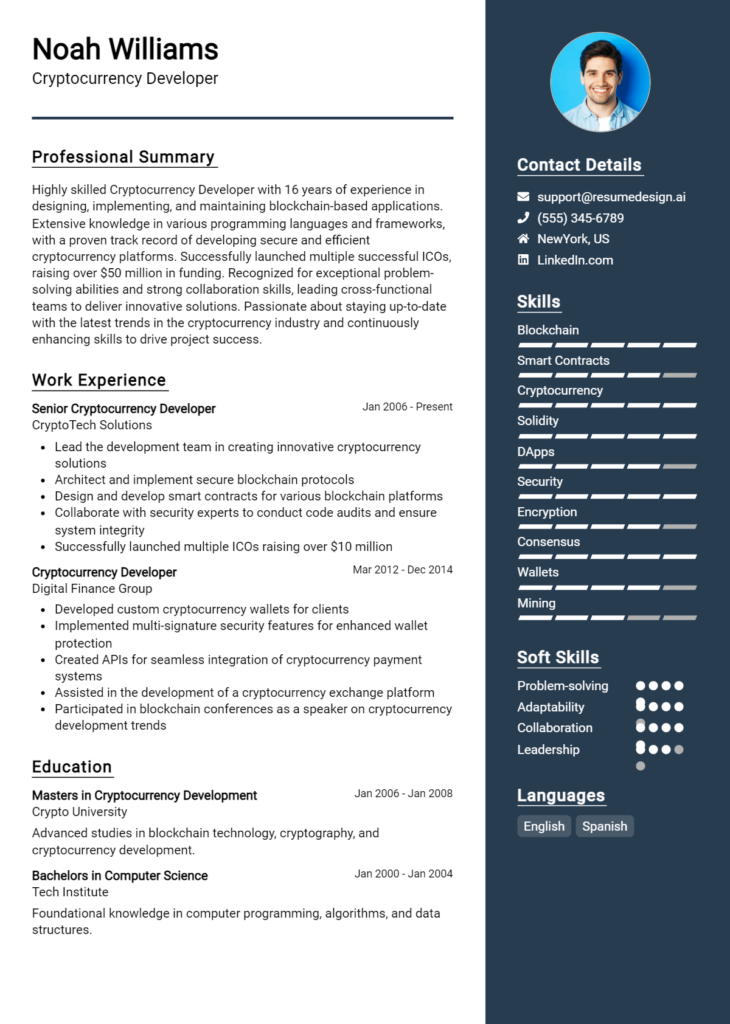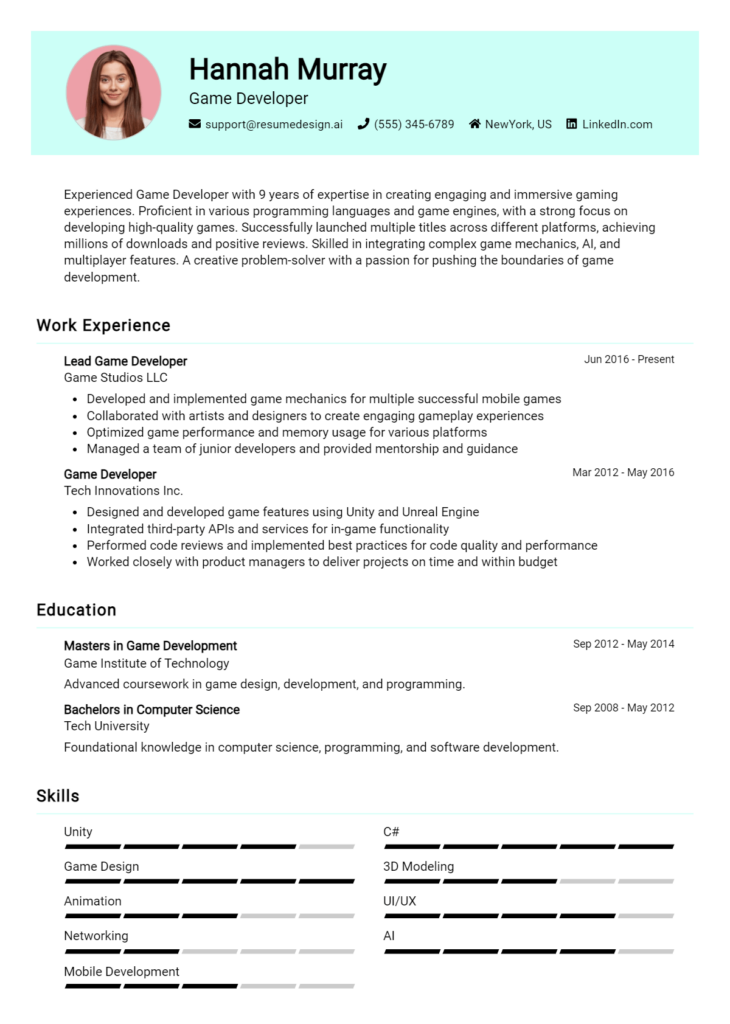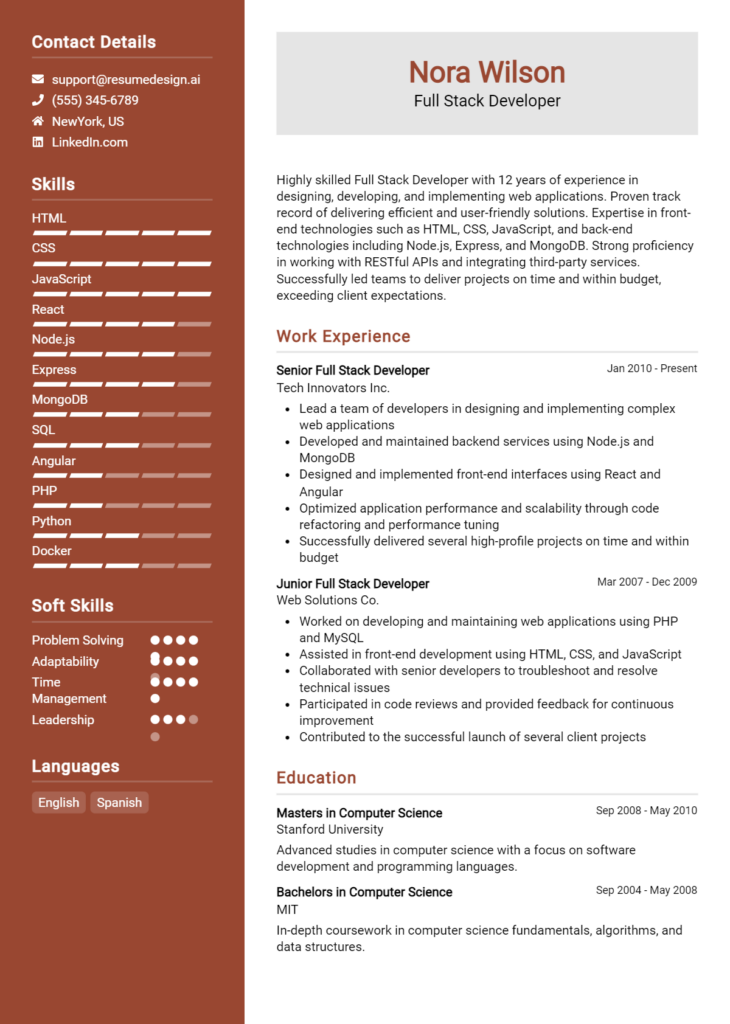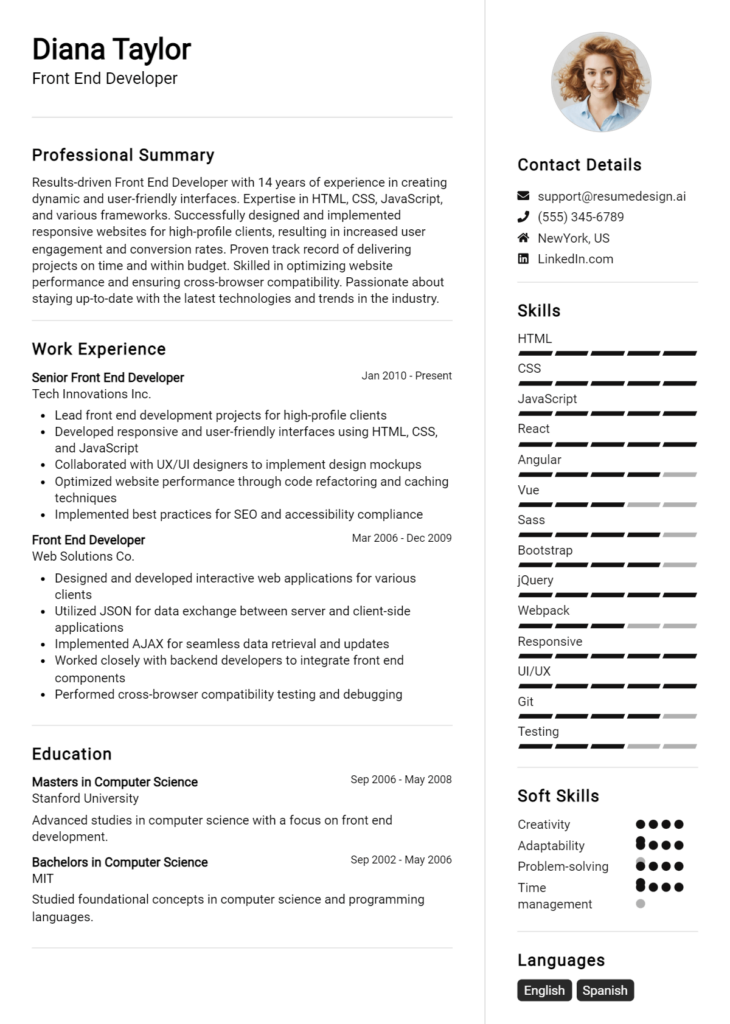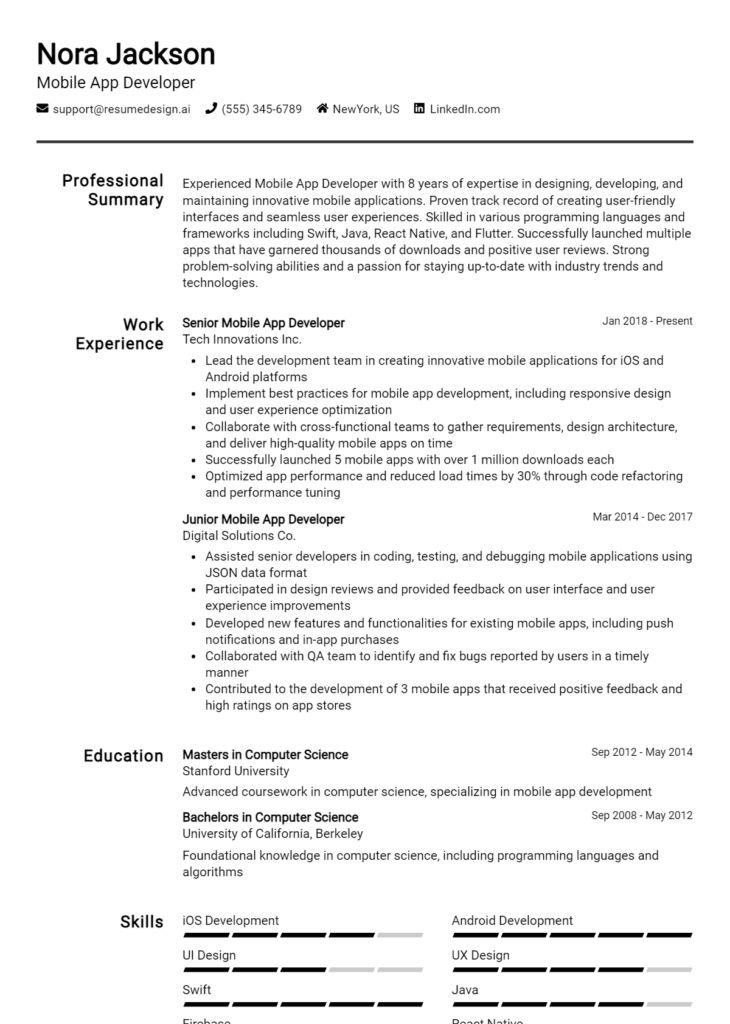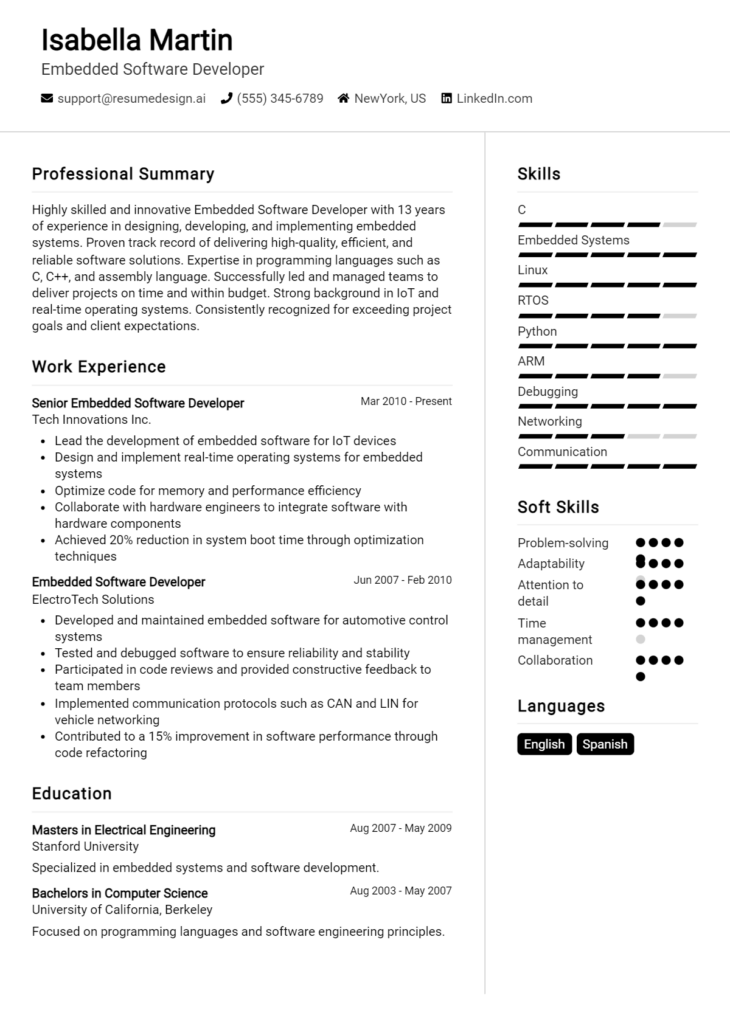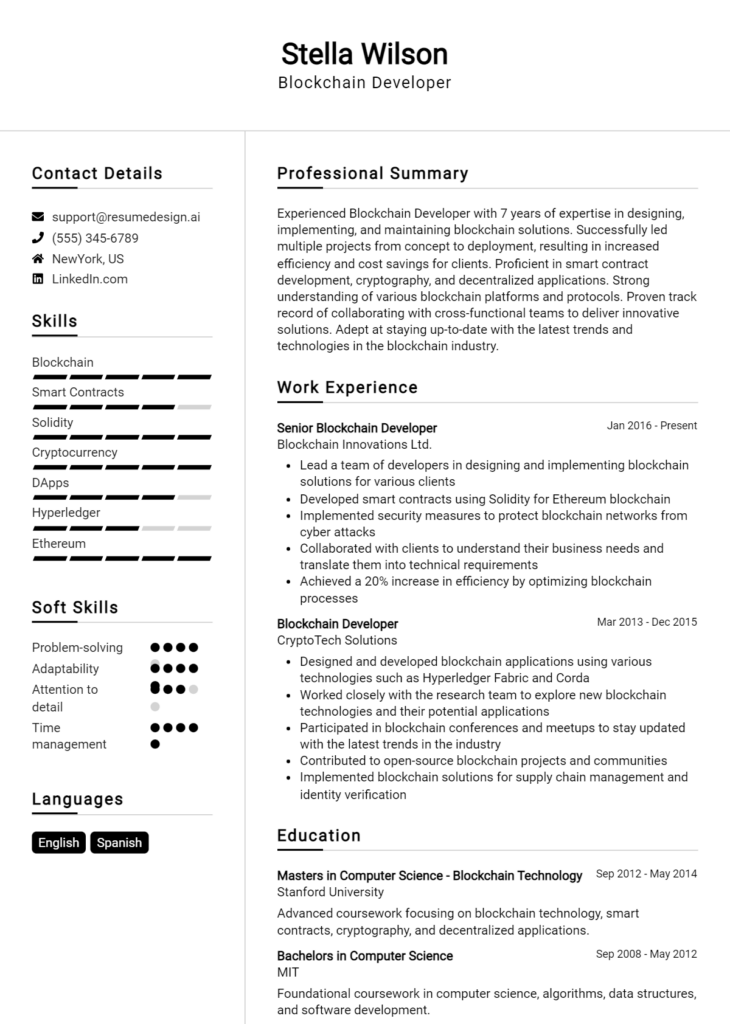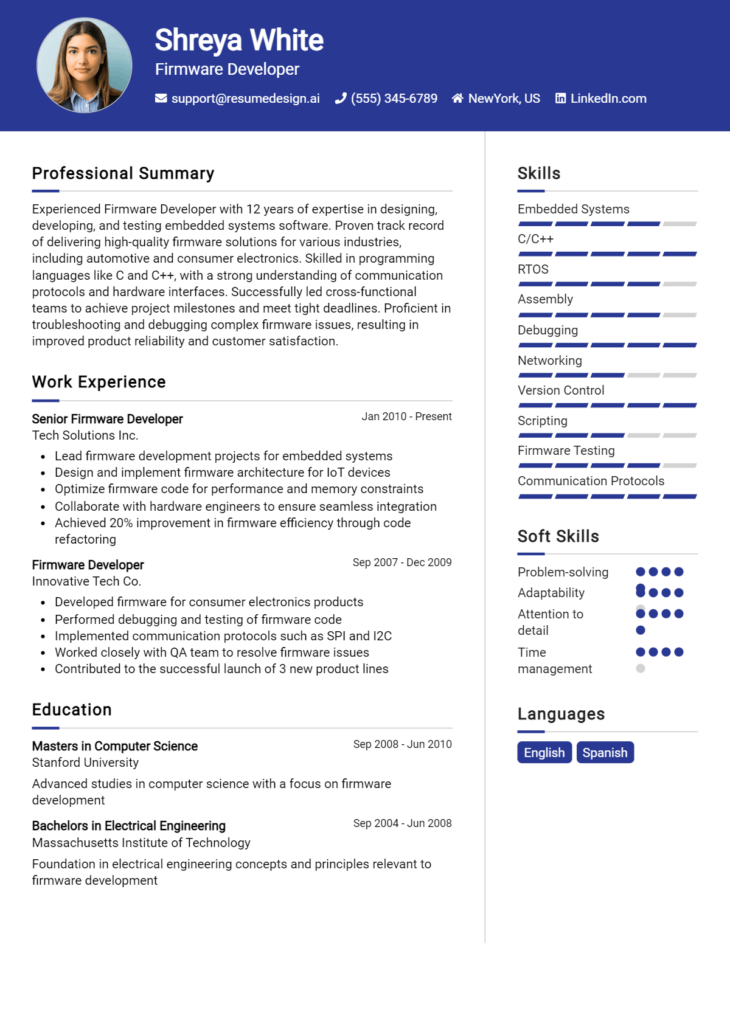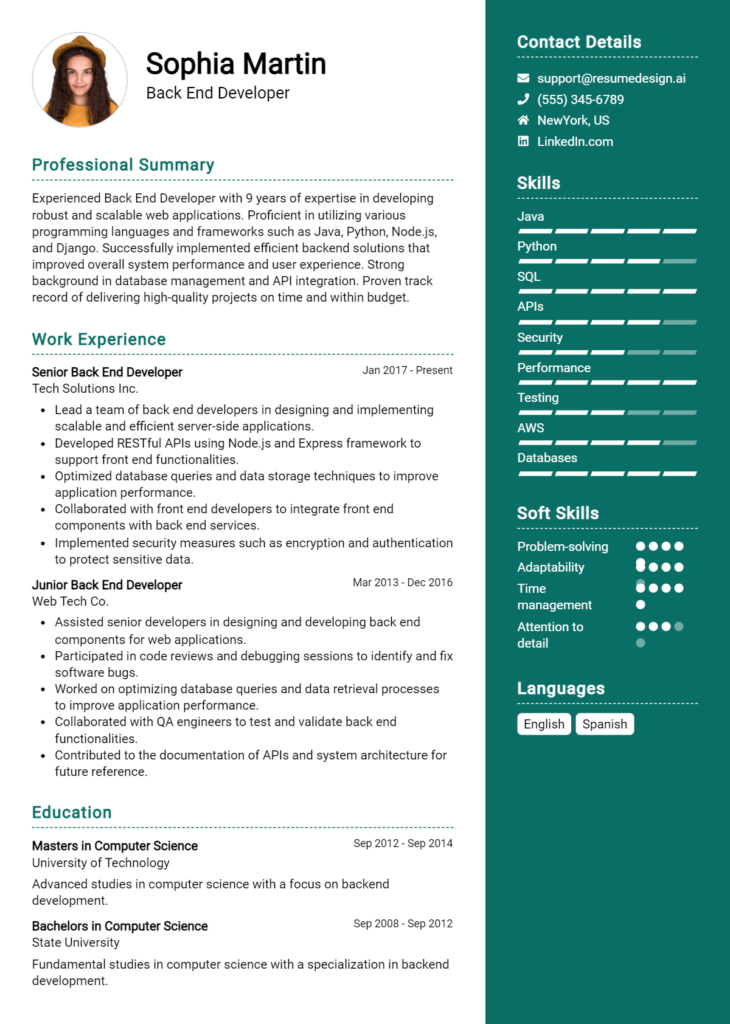Serverless Developer Core Responsibilities
A Serverless Developer is responsible for designing, developing, and deploying scalable applications using serverless architectures. They must possess strong technical skills in cloud services, APIs, and event-driven programming, along with operational expertise to ensure seamless integration across departments. Problem-solving abilities are crucial for troubleshooting and optimizing performance. These skills contribute significantly to organizational goals, enabling swift deployment and reduced costs. A well-structured resume can effectively showcase these qualifications, emphasizing the candidate's versatility and teamwork capabilities.
Common Responsibilities Listed on Serverless Developer Resume
- Design and implement serverless applications using cloud platforms.
- Develop and manage APIs to facilitate communication between services.
- Optimize serverless functions for performance and cost efficiency.
- Collaborate with cross-functional teams to gather requirements.
- Monitor and troubleshoot serverless applications in production.
- Utilize CI/CD pipelines for automated deployment processes.
- Implement security best practices for serverless architecture.
- Document technical specifications and deployment procedures.
- Stay updated on industry trends and emerging technologies.
- Provide technical support and training to team members.
- Conduct performance testing and optimization for serverless solutions.
- Engage in code reviews to ensure quality and maintainability.
High-Level Resume Tips for Serverless Developer Professionals
In today's competitive job market, a well-crafted resume is essential for Serverless Developer professionals looking to stand out to potential employers. Your resume is often the first impression you make, serving as a gateway to showcase your technical skills, innovative projects, and relevant experiences. A strong resume not only highlights your capabilities but also conveys your achievements in a manner that aligns with the needs of the employer. In this guide, we will provide practical and actionable resume tips specifically tailored for Serverless Developer professionals, ensuring you present your best self on paper.
Top Resume Tips for Serverless Developer Professionals
- Tailor your resume to the specific job description, incorporating keywords and phrases that align with the role.
- Showcase relevant experience by including specific serverless projects you've worked on, detailing your role and contributions.
- Quantify your achievements where possible, using metrics to demonstrate the impact of your work (e.g., reduced costs by X%, improved performance by Y%).
- Highlight industry-specific skills such as AWS Lambda, Azure Functions, or Google Cloud Functions, along with any certifications you hold.
- Incorporate a summary statement at the top of your resume that encapsulates your expertise and career objectives.
- Use action verbs to describe your responsibilities and accomplishments, making your resume more dynamic and engaging.
- Keep your resume concise, ideally one page, focusing on the most relevant information to the role you're applying for.
- Include a section for technical skills, specifically mentioning tools and languages relevant to serverless architecture.
- Consider adding links to your GitHub or portfolio to showcase your projects and coding abilities directly.
By implementing these tips, you can significantly enhance your chances of landing a job in the Serverless Developer field. A targeted and well-structured resume can effectively communicate your qualifications and set you apart from other candidates, increasing your likelihood of securing an interview and ultimately, the position you desire.
Why Resume Headlines & Titles are Important for Serverless Developer
In the competitive landscape of technology, particularly for roles like Serverless Developer, a well-crafted resume headline or title is crucial for standing out to hiring managers. A strong headline serves as the first point of contact between the candidate and the employer, encapsulating their key qualifications in a single, impactful phrase. It should be concise, relevant, and directly connected to the position being applied for, quickly communicating the candidate's unique value proposition. By capturing attention immediately, an effective headline can significantly enhance the chances of a resume being thoroughly reviewed, setting the stage for further evaluation of the candidate's skills and experience.
Best Practices for Crafting Resume Headlines for Serverless Developer
- Keep it concise: Aim for one to two lines that summarize your expertise.
- Be specific: Tailor the headline to reflect the job title and requirements.
- Highlight key skills: Include essential skills relevant to serverless development.
- Showcase accomplishments: Mention notable achievements that demonstrate your capabilities.
- Use action verbs: Start with strong verbs to convey a sense of proactivity.
- Incorporate industry keywords: Use terminology that aligns with serverless technologies.
- Avoid clichés: Steer clear of overused phrases that may dilute your message.
- Match the tone: Ensure the headline aligns with the company's culture and job description.
Example Resume Headlines for Serverless Developer
Strong Resume Headlines
"Innovative Serverless Developer Specializing in AWS Lambda and Microservices Architecture"
"Results-Driven Serverless Engineer with 5+ Years of Experience in Cloud-Native Solutions"
“Expert Serverless Developer Focused on Scalability and Cost Optimization in Cloud Environments”
Weak Resume Headlines
“Developer Looking for Work”
“IT Professional with Experience”
The strong headlines are effective because they immediately convey the candidate's specific area of expertise and highlight their relevant experience, making it easy for hiring managers to identify their fit for the role. In contrast, the weak headlines are vague and generic, failing to communicate any unique qualifications or insights into the candidate's strengths. This lack of specificity can lead to a quick dismissal, as they do not capture the attention or interest necessary in a competitive job market.
Writing an Exceptional Serverless Developer Resume Summary
A strong resume summary is a crucial component for a Serverless Developer, as it serves as the first impression a hiring manager will have of a candidate. This brief yet powerful paragraph quickly captures attention by succinctly showcasing key skills, relevant experience, and notable accomplishments that align with the specific requirements of the job. An impactful summary not only highlights a candidate's qualifications but also sets the tone for the rest of the resume. Therefore, it should be concise, engaging, and tailored to the position being applied for, ensuring that it resonates with the needs of the employer.
Best Practices for Writing a Serverless Developer Resume Summary
- Quantify achievements where possible to demonstrate impact, such as the scale of applications developed or the percentage of performance improvement.
- Focus on relevant technical skills, including specific programming languages, frameworks, or tools associated with serverless architecture.
- Tailor the summary to the job description by incorporating keywords and phrases that match the requirements of the position.
- Keep it concise—aim for 3-5 sentences that deliver maximum information without overwhelming the reader.
- Highlight unique accomplishments, such as successful projects or innovative solutions that set you apart from other candidates.
- Use action verbs to convey a sense of proactivity and effectiveness in your previous roles.
- Consider the employer’s perspective by addressing how your skills and experiences can benefit their organization.
- Avoid jargon and overly technical language that may not be understood by all hiring managers; keep it clear and accessible.
Example Serverless Developer Resume Summaries
Strong Resume Summaries
Results-driven Serverless Developer with over 5 years of experience creating scalable applications using AWS Lambda and API Gateway. Successfully led a team in migrating a monolith to a serverless architecture, reducing operational costs by 30% while improving deployment speed by 40%.
Innovative Serverless Developer skilled in building microservices with Node.js and DynamoDB, achieving a 99.9% uptime for cloud-based applications. Developed a data processing pipeline that reduced latency by 50%, enhancing user experience and engagement.
Detail-oriented Serverless Developer with expertise in deploying serverless solutions using Azure Functions. Spearheaded a project that integrated serverless technology into existing infrastructure, resulting in a 25% increase in application performance and a 15% reduction in server costs.
Weak Resume Summaries
Serverless Developer with experience in cloud technologies looking for a new opportunity to apply skills.
Dedicated software developer interested in serverless solutions and eager to learn more about the field.
The strong resume summaries are effective because they provide specific details about the candidate's experience, including quantifiable achievements and relevant technologies, making them compelling and directly related to the Serverless Developer role. In contrast, the weak summaries lack specificity, measurable outcomes, and do not convey the candidate's unique value or relevance to the position, making them less impactful to hiring managers.
Education and Certifications Section for Serverless Developer Resume
The education and certifications section of a Serverless Developer resume is critical as it showcases the candidate's academic background, relevant industry certifications, and commitment to ongoing professional development. This section not only highlights the qualifications that align with the specific demands of the serverless computing landscape but also emphasizes the candidate's dedication to continuous learning in a rapidly evolving field. Including pertinent coursework, certifications, and specialized training can significantly bolster the candidate's credibility and demonstrate their preparedness for the challenges associated with serverless architectures.
Best Practices for Serverless Developer Education and Certifications
- Prioritize relevance by including degrees and certifications that directly relate to serverless technologies and cloud computing.
- Provide detailed information about coursework that covers key concepts in serverless architecture, microservices, and cloud platforms.
- Highlight advanced or industry-recognized credentials, such as AWS Certified Developer or Google Cloud Professional Cloud Developer.
- Keep the section organized and concise, focusing on the most impactful qualifications.
- Include the date of completion for certifications to demonstrate your commitment to keeping skills current.
- Consider adding any hands-on training or workshops that enhance your practical understanding of serverless implementations.
- Use clear formatting to make it easy for hiring managers to scan for relevant qualifications quickly.
- Regularly update your education and certifications section to reflect new achievements and learning opportunities.
Example Education and Certifications for Serverless Developer
Strong Examples
- Bachelor of Science in Computer Science, University of Technology, 2021
- AWS Certified Solutions Architect – Associate, 2023
- Google Cloud Professional Cloud Developer Certification, 2022
- Coursework in Distributed Systems and Cloud Computing at XYZ University, 2020
Weak Examples
- Associate Degree in General Studies, Community College, 2019
- Old certification in Java Programming from 2015, no relevance to serverless technologies
- High School Diploma, 2017 (no further education mentioned)
- Expired certification in Microsoft SQL Server from 2018
Strong examples are considered effective because they demonstrate relevant education and up-to-date certifications that align with the skills and knowledge necessary for a Serverless Developer role. They reflect a clear focus on serverless technologies and related coursework, showcasing a candidate's preparedness for the demands of the position. Conversely, weak examples highlight a lack of relevance or outdated information, which can detract from a candidate’s qualifications and fail to convey their readiness for a role in serverless development.
Top Skills & Keywords for Serverless Developer Resume
In the rapidly evolving field of cloud computing, the role of a Serverless Developer has become increasingly vital. The transition to serverless architecture allows organizations to reduce operational costs and improve scalability, making it essential for developers in this role to possess a diverse set of skills. A well-crafted resume that highlights these skills can significantly enhance a candidate's chances of landing an interview. By showcasing both hard and soft skills, a Serverless Developer can demonstrate their technical expertise as well as their ability to collaborate effectively within a team. This combination not only reflects proficiency in serverless technologies but also emphasizes adaptability and problem-solving capabilities, which are crucial in today’s fast-paced tech environment.
Top Hard & Soft Skills for Serverless Developer
Soft Skills
- Adaptability
- Communication
- Problem-solving
- Collaboration
- Time management
- Critical thinking
- Creativity
- Attention to detail
- Empathy
- Leadership
Hard Skills
- AWS Lambda
- Azure Functions
- Google Cloud Functions
- API Gateway
- Microservices architecture
- Serverless framework (e.g., Serverless, SAM)
- CI/CD tools (e.g., Jenkins, GitLab CI)
- Database technologies (e.g., DynamoDB, Firebase)
- Monitoring and logging (e.g., CloudWatch, ELK Stack)
- Infrastructure as Code (e.g., Terraform, CloudFormation)
For more information on specific skills and how to effectively present your work experience in a resume, consider exploring additional resources that can guide you in highlighting your qualifications as a Serverless Developer.
Stand Out with a Winning Serverless Developer Cover Letter
I am writing to express my interest in the Serverless Developer position at [Company Name], as advertised on [Job Board/Company Website]. With a robust background in cloud computing and extensive experience in developing and deploying serverless applications, I am excited about the opportunity to contribute to your team. My expertise in AWS Lambda, Azure Functions, and Google Cloud Functions, combined with my passion for optimizing performance and reducing operational costs, makes me a strong candidate for this role.
In my previous position at [Previous Company Name], I successfully led a project that transitioned a monolithic application to a fully serverless architecture. This not only improved scalability and reduced latency but also resulted in a 40% decrease in infrastructure costs. I utilized various serverless technologies, including API Gateway, DynamoDB, and S3, and implemented CI/CD pipelines for seamless deployments. My hands-on experience with monitoring tools such as AWS CloudWatch and Azure Monitor ensured the applications remained performant and resilient.
I am particularly drawn to [Company Name]'s commitment to innovation and excellence in cloud solutions. I admire your recent projects, such as [specific project or initiative], which align with my own values of leveraging technology to solve complex problems. I am eager to bring my collaborative spirit and proactive approach to your team, working closely with both developers and stakeholders to deliver high-quality, scalable solutions that meet user needs.
Thank you for considering my application. I look forward to the possibility of discussing how my experience and vision for serverless development can contribute to the ongoing success of [Company Name]. Please feel free to contact me at [Your Phone Number] or [Your Email] to schedule a conversation.
Common Mistakes to Avoid in a Serverless Developer Resume
When crafting a resume for a Serverless Developer position, it's crucial to present your skills and experiences effectively. Many candidates fall into common pitfalls that can hinder their chances of making a strong impression. Avoiding these mistakes can significantly enhance your resume and help you stand out in a competitive job market. Here are some common mistakes to steer clear of:
Lack of Specificity: Vague descriptions of past roles can leave hiring managers confused. Instead, use specific examples of projects and technologies you've worked with to demonstrate your expertise.
Ignoring Relevant Skills: Failing to highlight key serverless technologies (like AWS Lambda, Azure Functions, or Google Cloud Functions) can make your resume less appealing. Ensure you list all relevant tools and frameworks.
Overemphasizing Non-Technical Skills: While soft skills are important, a Serverless Developer role requires strong technical expertise. Balance your soft skills with technical accomplishments and contributions.
Using Generic Job Descriptions: Tailoring your resume to reflect the specific responsibilities of the job you’re applying for is essential. Generic descriptions can suggest a lack of interest or effort.
Neglecting Achievements: Simply listing duties without showcasing your accomplishments can weaken your resume. Highlight measurable outcomes, such as improved performance or reduced costs resulting from your contributions.
Poor Formatting: A cluttered or difficult-to-read resume can detract from your qualifications. Use clear headings, bullet points, and consistent formatting to ensure readability.
Skipping Continuous Learning: Serverless technology evolves rapidly. Not mentioning ongoing education, certifications, or personal projects can signal a lack of engagement in the field.
Not Including Collaboration Experience: Serverless development often involves working in teams. Omitting your experience with collaboration tools or methodologies can overlook an essential aspect of the role.
Conclusion
As a Serverless Developer, you play a crucial role in designing and implementing applications that leverage cloud computing without the need for infrastructure management. Your expertise in serverless architectures, event-driven programming, and microservices can significantly enhance application efficiency and scalability. Throughout this article, we have discussed essential skills and technologies you should highlight in your resume, such as AWS Lambda, Azure Functions, and various backend technologies.
Additionally, we emphasized the importance of showcasing your problem-solving abilities and experience with CI/CD pipelines, as these are vital in a serverless environment. Remember to tailor your resume to reflect the specific requirements of each job application, ensuring that your unique qualifications stand out.
Now is the perfect time to review your Serverless Developer Resume and make any necessary updates. Utilize available resources to enhance your application materials. Check out resume templates for visually appealing layouts, or use the resume builder to create a professional resume effortlessly. Explore resume examples for inspiration and see how others have effectively showcased their skills. Lastly, don’t forget to refine your introduction with a compelling cover letter template.
Take action today and give your resume the attention it deserves to stand out in the competitive field of serverless development!

